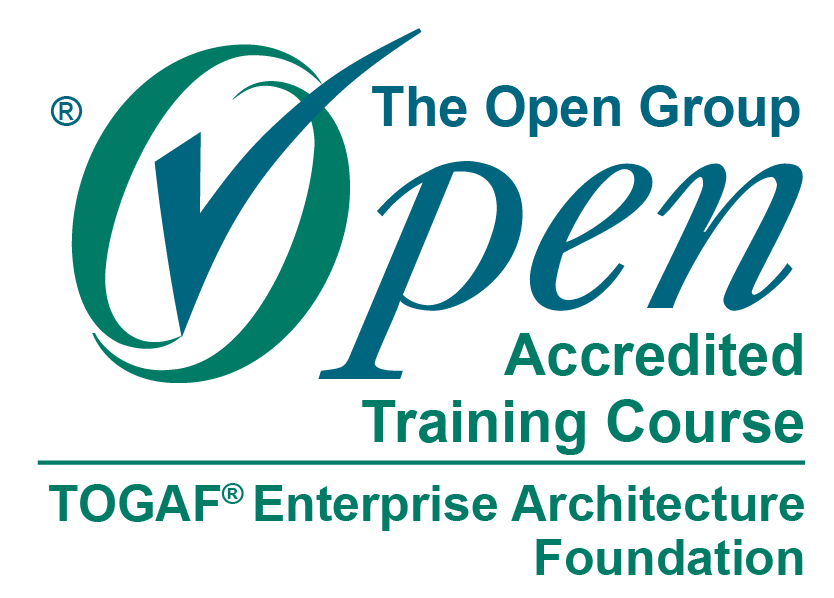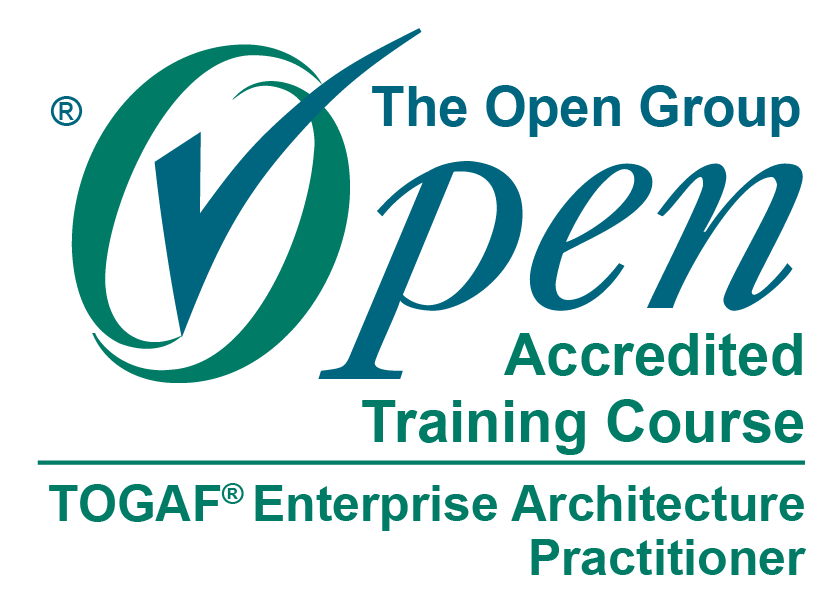TOGAF® Intensive Program (EA Practitioner Bridge)
This training program is based on the togaf standard, 10th edition – the latest and most up-to-date edition released by the open group.
TOGAF® Intensive Program (EA Practitioner Bridge)
The TOGAF Enterprise Architecture Practitioner certification provides validation that an individual has the knowledge, comprehension, and ability to analyze and apply the TOGAF Standard to developing, sustaining, and using an Enterprise Architecture.
The purpose of this bridge learning path is to enable individuals who are TOGAF 9 Certified to obtain TOGAF Enterprise Architecture Practitioner certification. The bridge option exists to recognize the existing investment in TOGAF certification for individuals who have achieved the TOGAF 9 Certified qualification.
The learning objectives at this level focus on application and analysis in addition to knowledge and comprehension.
Certified individuals will have demonstrated their understanding of:
- The key changes in the TOGAF Standard
- The context within which an Enterprise Architecture practitioner must operate
- How to apply the stakeholder management technique
- How to implement the Architecture Vision phase including its applicable techniques
- How to implement the Architecture Development Method (ADM) Phases B, C, and D to develop an
- architecture, together with the applicable techniques
- How to implement the ADM Phases E, F, and G to implement an architecture, together with the
- applicable techniques
- How to support the ADM work
Certification is only achieved by passing the examination.
Our promise is simple – to deliver the guidance you need to ace the test.
| Examination Name: TOGAF Enterprise Architecture Bridge |
| Examination Type: Section 1: 10 multiple-choice questions / 20 minutes, Section 2: 4 questions / 40 minutes |
| Pass Mark: 18/30 (60%) |
| Supervised: Yes |
| Open Book: Yes for Section 2 only. |
| Delivery Options: Two options are available for participants to take their tests: 1. Pearson VUE test centers. 2. At your home or in your office using Online Proctored delivery. |
- TOGAF 9 Certified qualification.
- Individuals who are TOGAF 9 Certified who wish to update their qualifications as part of their professional development, and demonstrate their ability to apply Enterprise Architecture
Certified individuals will have demonstrated their understanding of:
- The key changes in the TOGAF Standard
- The context within which an Enterprise Architecture practitioner must operate
- How to apply the stakeholder management technique
- How to implement the Architecture Vision phase including its applicable techniques
- How to implement the Architecture Development Method (ADM) Phases B, C, and D to develop an
- architecture, together with the applicable techniques
- How to implement the ADM Phases E, F, and G to implement an architecture, together with the
- applicable techniques
- How to support the ADM work
Certified individuals will have the following competencies:
- Know how to apply the TOGAF approach to transform and manage change
- Know how to apply the TOGAF method
- Know how to apply TOGAF techniques
- Test voucher for the TOGAF Enterprise Architecture Bridge Test
- Free resit if you don’t pass
- Copies of accredited training material
- Practice tests
- TOGAF Enterprise Architecture Practitioner Learning Studies Question and Answer Book. These Learning Studies support the TOGAF Enterprise Architecture Practitioner certification program. They are presented in book form as a set of eighteen scenario questions. The scenarios provides active learning in the form of problem-based learning to reinforce aspects of the syllabus taught in the class.
- A qualified, competent and experienced instructor
bonus: Applied TOGAF® Enterprise Architecture Practitioner Open Badge
Included is the TOGAF Enterprise Architecture Practitioner Learning Studies. This is a mandatory element of the training. Candidates who become certified and who also satisfactorily complete these learning studies will in addition earn The Open Group Certified: Applied TOGAF® Enterprise Architecture Practitioner Open Badge to reflect their ability to analyze and apply Enterprise Architecture.
TOGAF Enterprise Architecture Practitioner Learning Studies Question and Answer Book are included in the training delivery.
Earning this badge reflects the ability to analyze and apply Enterprise Architecture.
- These Learning Studies support the TOGAF Enterprise Architecture Practitioner certification program.
- They are presented in book form as a set of eighteen scenario questions. The scenarios provides active learning in the form of problem-based learning to reinforce aspects of the syllabus taught in the class.
- Worked solutions and detailed explanations are provided in a separate answers book.
- It is recommended to spend at least three hours on this set of learning studies.
EA teams worldwide are using the TOGAF standard to deliver sustainable competitive advantage, create value, improve operations, and adapt new technology.



Contact Us
Thank you for your interest in ArchiTacts. Please fill out this form to inquire about one or more of our training courses or ask about our services. To receive timely, precise and comprehensive information please correspond with us using your corporate email address.
